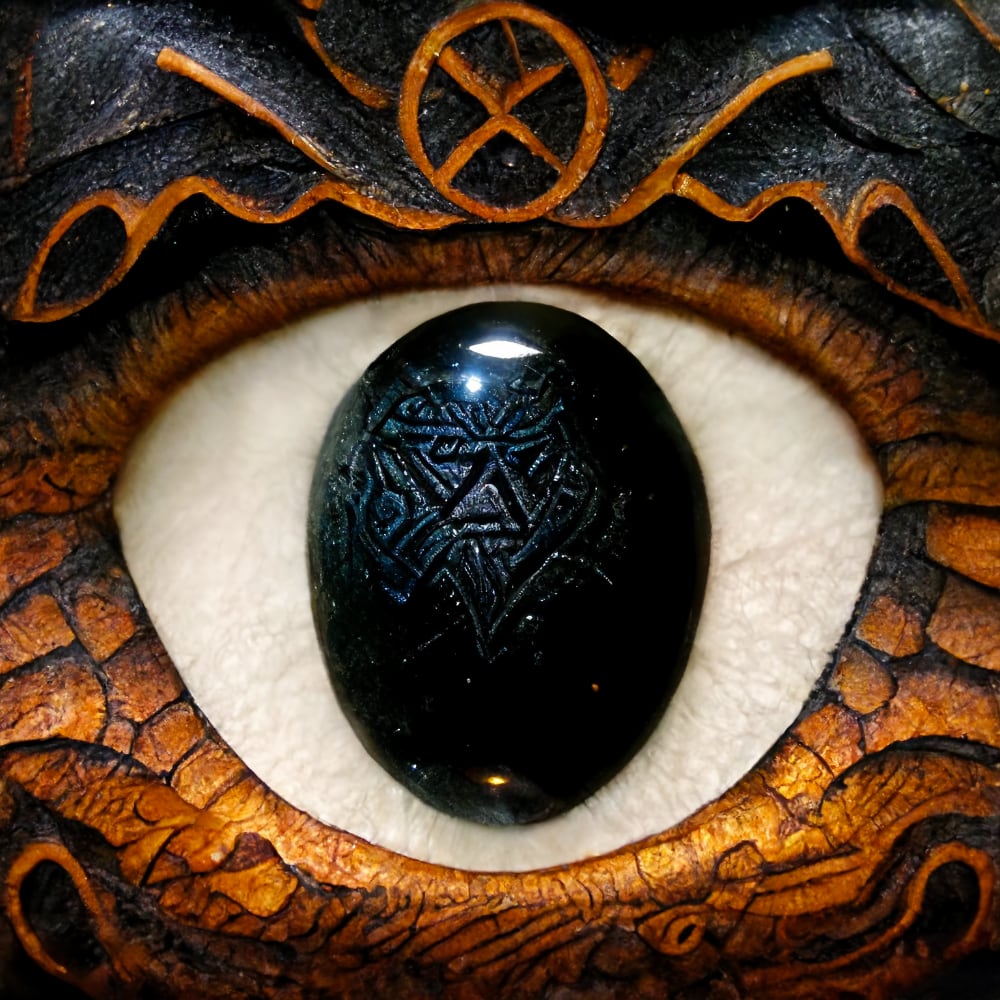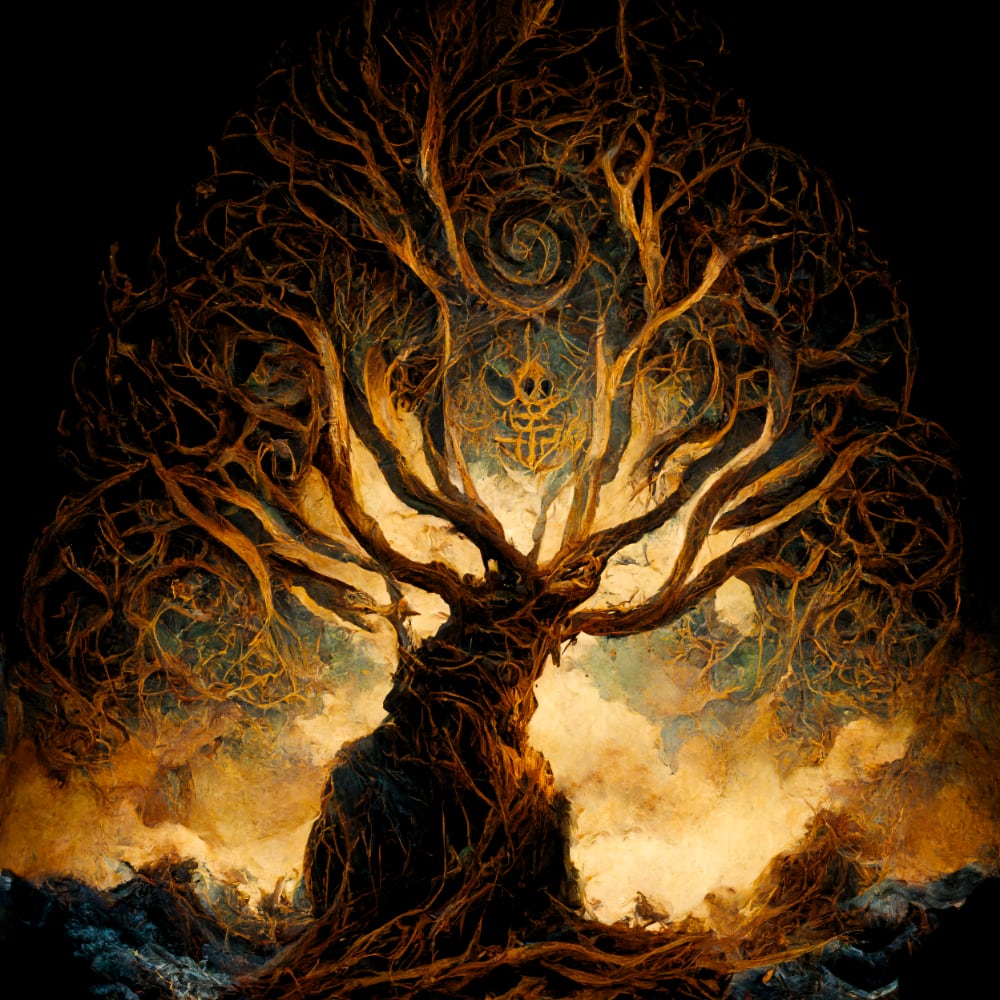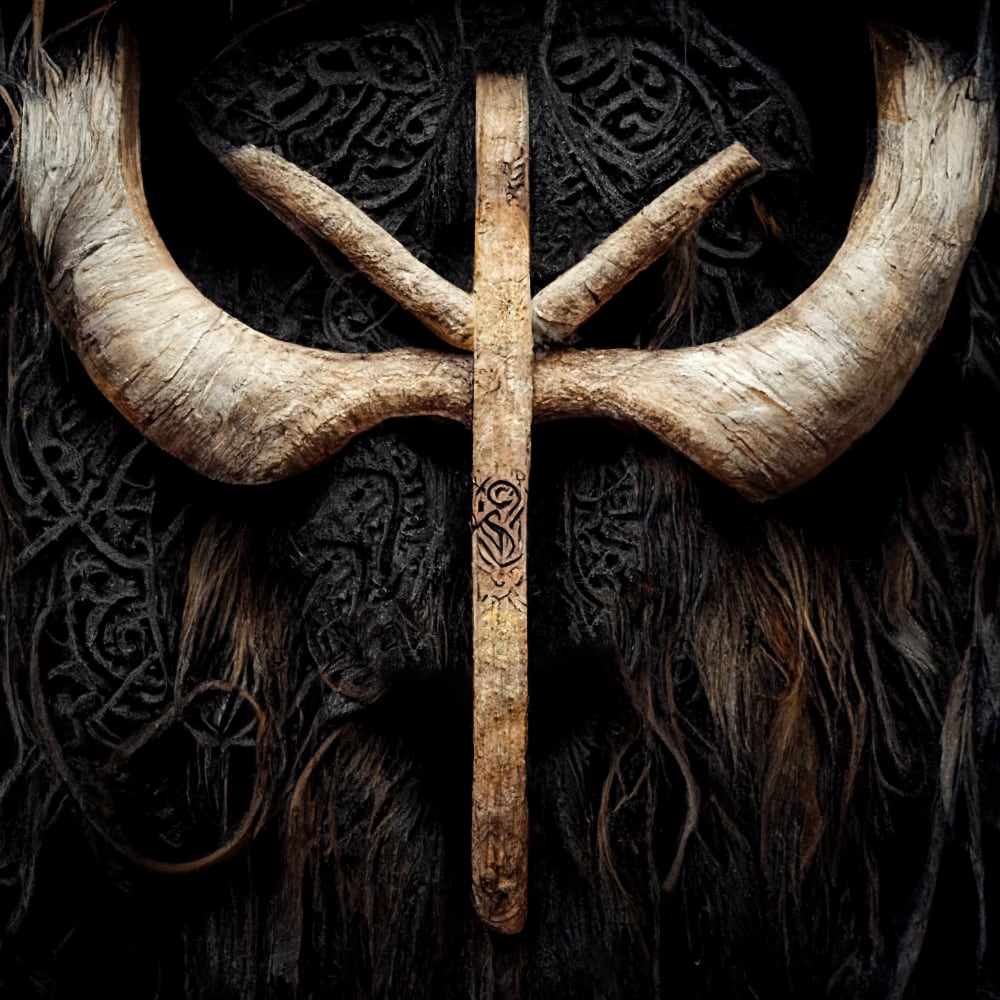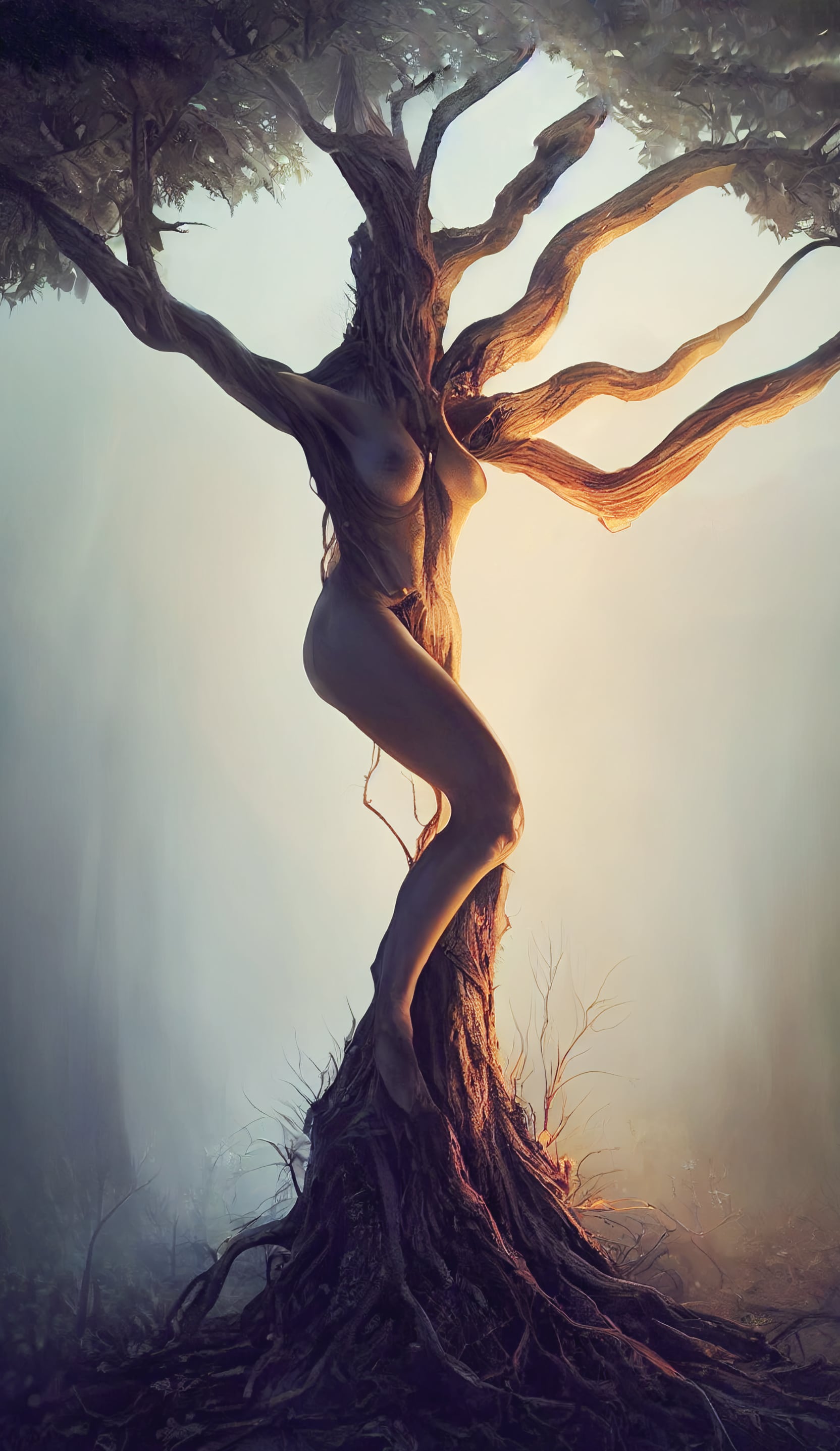Tradition
Rising from the restless waters of the fatal lake in the underworld; primal, ferocious and untamed. Roaring thunder and devastating storm, carrying the agonizing winds of initiation. Child of the dragon’s flame, blood of serpents in echoes forgotten… Your nature still arcane.

Obsidian
Gjöll
Eye of the Dragon
Abyssal Gateway of Móðguðr

Sacred Yew
Yggdrasill
Spirit of the Dragon
Tree of Death and Life

Algiz
Rún
Horns of the Dragon
Rune of Ice and Fire
Mysteries of Ice and Fire
The Tradition of the Primordial Dragon is a path of sorcery established through a profound paradigm of devotional spirituality aligned to the ancestral powers that precede the cosmos — the primeval acausal forces of the abyss that even the might of gods bows to — entwined with an animistic foundation that comprises an extensive body of praxis and esoteric teachings that incorporate shamanistic technologies, ancient tribal paganism, European traditional witchcraft and advanced Eastern metaphysics. Its intrinsic complexity, lawless transgressive nature and inexorable dangers that can never be underestimated, make it a tradition and initiatory system embraced primarily by the most advanced practitioners that benefit from comprehensive experience with the magical arts at a pragmatic and empirical level, making it not only inadequate to the non-adept or the untrained but also extremely harmful to the egotistic, the vain and the foolish.
Its spiritual understanding bridges the philosophical, mythological and inherently magical, in an exhaustive exploration of the numinous through the untold mysteries of otherness, and by tapping into the fabric of life itself and alchemically sewing it to the mysteries of death. Such higher gnosis has both a cosmic application through sophisticated techniques of stellar magic and astronomical alignment, as well as a chthonic and therefore acosmic one by virtue of the penetrating methods of forbidden sorcery, abyssal theurgy, thaumaturgic techniques and necromantic operations, effectively breaking the shackles of cultural and social restraints as well as every form of established dogma that seeks to limit or inhibit the honest seeker. This tradition is firmly safeguarded by robust mechanisms that are spiritual, metaphysical and psychological, being remarkably effective in preventing various forms of corruption and exploitation that remain so prevalent in modern occult society and openly perpetuated by the advent of commercial occultism and all of its associated spiritual dishonesty.
As a living tradition that must be experienced, embraced and practiced firsthand through committed hard work, the Tradition of the Primordial Dragon is not something stagnated, set in stone or static in time but sincerely dynamic, proudly evolving and ever-changing to the tides of time and shifting esoteric formulae of the abyss.

One of the most venerable icons of the Tradition of the Primordial Dragon is the poisonous Yew as the Tree of Death and Life, the transcendental Axis Mundi and a talismanic gateway that bridges the sacred with the profane, as well as the earthly realm of Malkuth with the forbidden cave of Nahemoth, being the transgressive pathway into the underworld leading to the unspeakable throne of Thaumiel, the sovereignty of Dragons that rule Sitra Achra. Indigenous to ancient Europe and Asia, the Yew is amongst the oldest living organisms, capable of an existence that spans millennia, a noble ally of the Elder Gods and those of dragon blood, as well as a most sacred spirit of this tradition. Devotees pay it reverence alongside the Great Dragons and their infernal retinue, particularly through devotional rites and sacraments of high magic involving other plant allies and familiars of the poison path. A recognizable symbol of immortality in witchcraft, Yew trees are both deadly as well as life-giving, bearing remarkable regenerative properties in the natural world and a resilience that withstands environmental change, societal decay and the vile wars of mortal rule. Among historians there remain some arguments on whether Yggdrasill was thought to be originally a Yew or an Ash tree during the old days, both holding merit concerning their deductions and interpretations even if ultimately speculative, however that is a subject more properly addressed within the grimoires of our tradition.
Runic workings through various philological systems are a prominent vehicle of esoteric wisdom in Northern European witchcraft and a common tool of the craft in heathen traditions. The importance of language and its intimate ties with sigils, spellcraft and esoteric symbolism, either written, carved or uttered — like in the incantation practices of Galdr — is one that should not be overlooked, particularly under the light of ancient magical technologies such as Heka from ancient Egypt, an object of thorough study and pioneering development within various branches of this path. Through scholarly research, contemporary academia established the roots of the rune Algiz in the Proto-Germanic concepts of Elk and the Old Norse word for Yew, hinting at the arcane implications of this symbol in traditional magical practice in Europe from fjölkyngi to seiðr. Not only a linguistic instrument of collective value but also underlying a mystery through a sigillic bindrune, the Horns of the Dragon rune combines two primal runes of the Elder Futhark: Isaz as the rune of Ice with Kaunan or Kenaz as the rune of Fire. Such is a mystical interpretation that can be found intentionally represented across the three runic ættir of the Old Futhark, like in the significant example of Thurisaz iconifying the line of ancient giants, the Thursar. Under such initiatic understanding the rune Algiz unlocks important esoteric keys into generating the alchemical art of abyssal opposites and unifying them as the echoes from the Great Abomination that is the Three Headed Dragon, a spiritual process of mystical absurdity and a timeless paradox that is only possible through the most genuine and honest art of devotion. In this way initiates of the Dragon Path following its European branches of gnosis find in the hidden understanding of the Horns of the Dragon a relevant seal of this tradition, unveiling through symbolism that which is hidden in plain sight. Algiz being the rune of The Triad, it echoes a triple emanation of both the divine feminine and the daemonic feminine in perfect spiritual communion, being concealed behind the timeless veil that can reveal the three heads of the Primordial Dragon and the concomitant sorcerous formula of Dragon, Serpent and Shadow that defines the very foundation of the mysteries of Ice and Fire and the threefold secret of Yew, Birch and Oak.
Primordial Dragon v0.9.3
Copyright © 2025 Order of Aset Ka